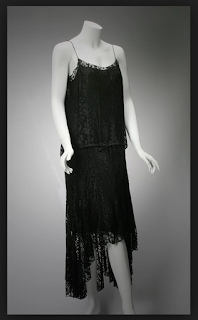Structuralist literary theory lends itself to the exploration of
the underpinnings found in literature, culture, and human experience to equip
critics with the tools necessary to examine a work and begin to draw
conclusions about its significance. These codes and structures that allow one
to interpret a text mirror those found in the elusive world of haute couture.
Haute
Couture, or “high sewing,” is the creation of custom-fitted clothing
constructed entirely by hand from start to finish and is solely produced in
France. Few haute couture houses are open today as a result of the modern ready-to-wear
industry. However, the influence of haute
couture and the designers who founded these eponymous labels continue to dictate
modern fashion. But where lies structuralism? The answer is found within the codes
of each fashion house.
A code in fashion is a structuring principle upon which the brand was
founded. Take for example Christian Dior and the House of Dior. In 1947, Monsieur
Dior revolutionized fashion with the “New Look.” This debut was an image of a
tight-fitting jacket, padded hips, a tiny waist, and an A-line skirt.
The “New Look” soon rooted itself into Hollywood and American culture which influenced the same swing skirts, bobby socks and oxfords of 50s American youth.
Haute couture respects its codes and interprets them in new ways each season to create the trends we see trickle down to ready-to-wear. These designer ready-to-wear trends find themselves in modern trends when more affordable brands such as Zara or H&M interpret these looks into mass produced clothing. Take for example a code established by the House of Chanel, the tweed jacket. An enduring piece that has been celebrated since its creation; it was designed in 1916 by Chanel. The jacket was part of Gabrielle Chanel’s goal to liberate women from the corset and free the body. She is responsible for the the first blending of womenswear and menswear.
Additionally, Chanel also designed one of the first flapper dresses which became synonymous with the styles of Roaring Twenties.
The codes established by the House of Dior and Chanel are reminiscent of the relatively few simple codes that organize phenomena and structure in literature. As in structuralist theory, the foundation and underlying principles are the same; what changes is how one decides to construct his or her edifice. Thus, modern fashion relies on the simple and basic rules that organize and classify the garment. The flapper dress, little black jacket, and “New Look,” are only a minority of the already few fundamental structures upon which we base our current fashions.
Fashion and structure share wholeness, transformation, and self-regulation in the ways explored through the codes of haute couture and its influence in the industry. In terms of wholeness, haute couture is different from the sum of its parts: concept, creation, technique, price, art, and philosophy. It rests as a combination of these things that serve its own unique purpose. Haute couture is not static, it is reinterpreted based on the codes of the house in new and exciting way by designers that continue the legacy of the founders in new and inventive ways. Lastly, self-regulation is obeyed in haute couture as there is law in France as to what is considered an haute couture piece. With such an adherence to a strict conceptual system, it becomes clear to see how structuralist theory and the art of high sewing blend so well.




No comments:
Post a Comment